Living to 100: Secrets to Apo Whang-Od’s long life
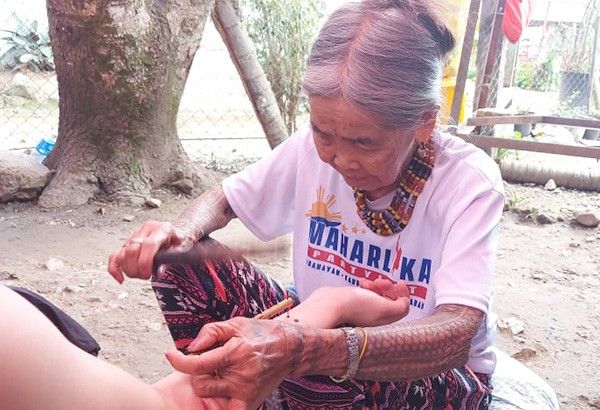
BUSCALAN — Like Catholics who are openly commemorating the passion, death and resurrection of Jesus Christ during Lent, death is not taboo among the Butbut tribe of Kalinga in northern Philippines.
In fact, the grave of the tribe’s oldest “mambabatok” (hand-tapped tattoo artist) Apo Whang-Od is already open and ready for her coffin anytime. Her kin are likewise nonchalant in discussing death; even showing to visitors the graves of their ancestors just below their houses. (The tribespeople, however, are afraid of ghosts, even Apo Whang-Od is, a local tour guide quipped.)
About 20 minutes uphill, near her other home in neighboring village Kanaan, the 105-year-old National Living Treasures Award (tantamount to National Artist) nominee has recently opened a small museum containing her many plaques, fan art and a giant resin statue that together with another one, cost P700,000, according to her caretaker and grandniece, Estella Palangdao.
This museum is now Whang-Od’s favored resting place, said Palangdao, and no longer the first one below the comfort room of the mambabatok’s original home in the tattoo village. The mausoleum, however, has to wait.
For now, Whang-Od is still a “living legend” to her 194,000 Facebook followers, and to at least 56,000 more from her other fan pages.
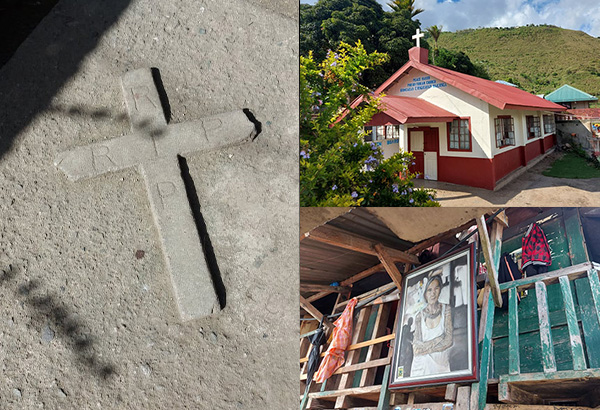

Although she is arguably the country’s last mambabatok who knows the chants behind the tattoo symbols, she is not her tribe’s oldest inhabitant. That honor belongs to Apo Oop, who is now 109 years old.
It is common for their tribe, said Estella, to surpass the 100-year-old mark. When someone from the tribe becomes a senior citizen, he or she is honored by giving his or her name as a nickname to one of the village’s children. The bestowing of the moniker to the child is also considered an honor for the youngster. That way, the tribesmen achieve a sense of immortality.
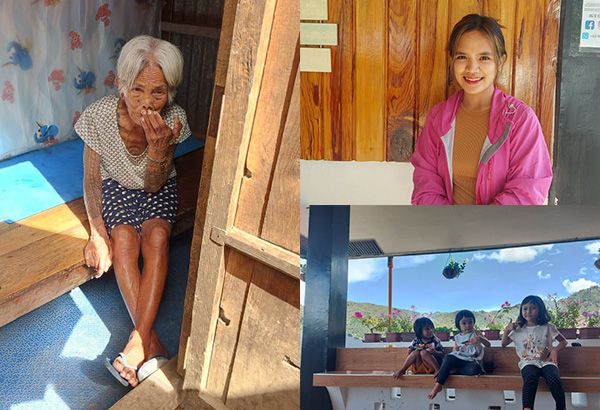
Even at her age, Whang-Od can still do farming, take care of children, do household chores, feed her poultry, and even occasionally hike her way in and out of their village. That is on top of accepting and/or tattooing her three-dot signature on up to 60 visitors a day.
What are her secrets to such longevity and stamina?
According to Estella, maybe Whang-Od’s lifestyle holds the key to her long life:
1. Mostly organic diet

Although fruits are rare in the village, the villagers, mostly women, plant and eat their own rice. Estella shared that they never use chemicals in their rice fields – only chopped wild sunflowers as fertilizers.
As vegetables, they rely mostly on grass and even exotic plants like Amorseco. They just sauté the Amorseco in little water, salt, and occasionally, chopped onions. They also harvest their own root crops and beans of all colors.
“But nowadays, we give our poultry some feeds, so we might not live just as long,” Estella quipped in Tagalog. Most tribesmen, especially the younger generations, speak Tagalog and English.
2. Occasional meat
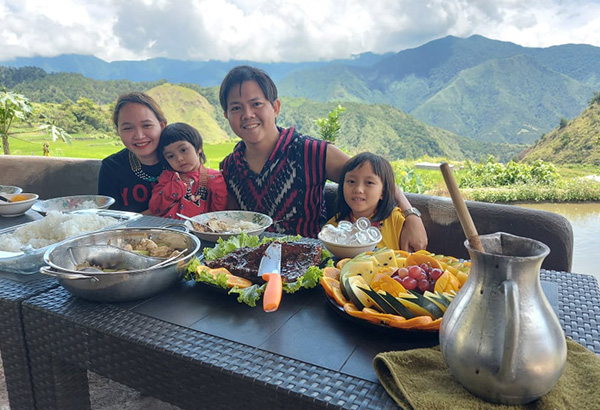
Whang-Od and the other elders are mainly vegetarians, said Estella, but the legendary mambabatok also indulges in tasting meat once in a while.
“Kapag nagluto ako ng fried chicken, kukurot lang s’ya,” Estella shared.
Whang-Od, Estella said, usually likes pork and seldom eats fish. When she is sick, she requests for a special kind of meat.
Like in cooking vegetables and their other dishes, the tribesmen usually just cook their meat in little salt and water.
3. Fresh air and water; no vices
Whang-Od grew up in a pollution-free mountain environment with fresh streams and river water. While Kalinga is very fertile with plants of all kinds, including prohibited ones that grow in the wild, Estella swore they never smoke or eat these plants. Some villagers, nevertheless, only use these as herbal medicines.
Apo Whang-Od, herself, has no vice and was never seen even smoking the traditional bamboo Kalinga pipe during our visit there just last week.
Many youngsters, however, are into Korean dramas and K-pop, so many locals also love soju (Korean alcoholic beverage), said the Leyte-born Lucy, who now resides in the village and operates the village's "five star" or most advanced homestay, GL's Crib and Cafe, together with her husband Gilbert, one of Whang-Od's grandnephews.


4. Mainly natural or herbal medicines
Apart from her special meat diet that she only requests when she is sick, Whang-Od sometimes takes paracetamol when not feeling well, said Estella.
5. Exercise through manual labor

Even as young children, the Butbut are trained to be hard workers, so they often sideline as porters or tourist guides. In between, they exchange hands on the field – women are in charge of planting the seedlings while men are tasked to harvest.
Whang-Od, said Estella, actually spent most of her 100+ years as a field worker. Estella estimated that the mambabatok only retired from hard rice farming when she was about 80 years old and started gaining fame and constant foreign customers for her tattoos.
The centenarian prefers tattooing over field work because the latter is so hard, noted Estella, but Whang-Od has remained agile and humble ever since and despite her fame and fortune.
The 30-minute hike up and down the village, across streams and narrow rice paddies, indeed gives anyone a good cardio.
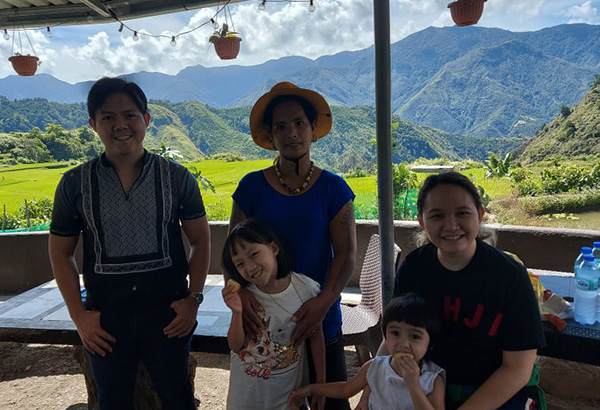
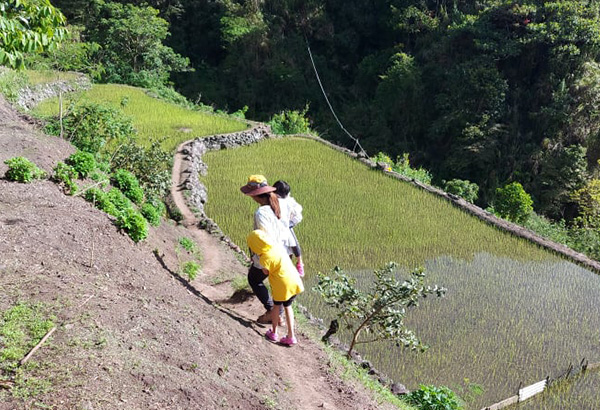
6. Staying calm and positive

It is no secret that Whang-Od once had the love of her life, Ang-Batang, who was among the headhunter warriors she tattooed as prizes for protecting their village or killing their enemies. But the two of them were forbidden to marry each other since Ang-Batang was deemed “impure” for being a headhunter, and according to their tradition, Whang-Od’s bloodline should not be impure because her descendants would inherit her tattooing talent.
Like in a modern telenovela, Ang-Batang was consequently engaged to Whang-Od’s best friend -Hogkajon, but Ang-Batang died in a logging accident when Whang-Od was 25.
Despite heartbreaks, Whang-Od has remained positive and calm; and although she vowed to not marry and never had children, she still managed to have many warrior boyfriends after Ang-Batang! (According to some village “Marites,” Whang-Od reportedly even two-or-three-timed, but this is unconfimed.)
In their culture, men and women of age can sleep in the same bed even if they are not yet married, although adultery is greatly frowned upon and not tolerated.
7. Simple joys
@philstarshowbiz How #ApoWhangOd smiles upon getting a #lipstick #gift from @philstarnews Lifestyle & Entertainment Editor @denibernardo24 ???? #fyp #foryourpage #travel #buscalan ? original sound - Philstar.com Life & Ent
When Whang-Od was still starting as a mambabatok at 15 years old, a woman’s beauty in her tribe is measured by how many tattoos she had.
But now, beauty has taken a different definition in their tribe.
More than a generous donation, what makes Whang-Od smile her biggest is a tube of red lipstick.
According to Estella, her grandaunt has countless red lipstick tubes and she sometimes gives away some to other women in their tribe.
“Pero ako, gusto ko dark lipstick,” Estella laughed.
While their village goes for no brand in particular, Estella said they usually like Maybelline New York.
About the groping, just ask actor Paolo Ballesteros and others (even a woman that the centenarian has mistaken for a man!).
8. Dreaming on
Even at her age, Whang-Od has never stopped dreaming, said Estella.
Recently, in fact, the mambabatok built herself, Estella and some other relatives new houses in Kanaan. She had a makeshift swimming pool built beside her museum as treat for the children. She also bought a new vehicle. For every feat, several cows and pigs were killed, according to their tradition, for feasts.
So far, the mambabatok has trained about 90 of the tribesmen, mostly women, to be her apprentices, said Georgia, who was once Whang-Od’s youngest apprentice at 12 years old. Now, the youngest is nine and every apprentice is picked according to his or her knack for tattooing.
9. Passion over profit
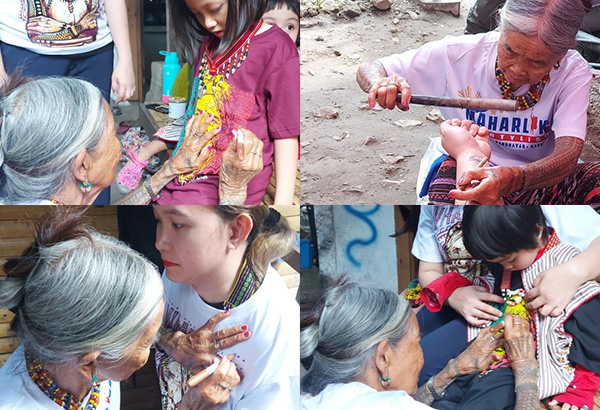
If there is one very remarkable trait among the Butbut, it is that they welcome tourists and visitors like their own family. They have encountered thousands of locals and foreigners for sure, but they treat everyone equally and accommodate each one like it's their first. They would invite you to stay at their homes, eat with them at their tables, even carry your heavy luggage and children over the slippery rice paddies.
Even though, of course, they are expecting you to pay them, you can see and feel from their kind of hospitality that it is natural to them and they are doing it because they genuinely care for you.
We have never experienced being ripped off in their village. We were even served with more than what we paid for. Some repeat visitors even already had been called by locals with tribal monikers (although the villagers now have modern names).
When Apo Whang-Od welcomed us in her house, her eyes were not beaming with dollar signs. She immediately looked at our sleepy baby and carried the toddler as if cradling her to sleep in her lap. Immediately, she was our grandma from the boondocks and not the inked superstar people defended from Nas Daily. She hugged us, stroked my daughters’ hair, as if we were relatives coming home. (About Nas Daily, the villagers and Whang-Od do not hold a grudge against him and dismissed what happened as a mere misunderstanding. They never spoke ill of him and would still welcome him should he visit.)
Related: Indigenous Peoples Month: Apo Whang-od, Nas Academy reconcile; contract declared 'null and void'
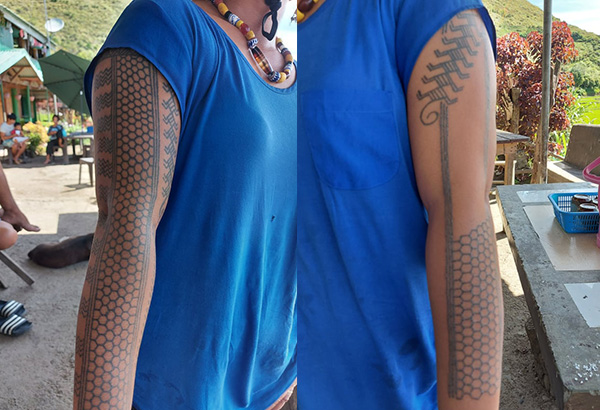
Even Estella and the rest of the villagers exuded the same warmth. They never named their price. They spoke to us as friends and carried our children on their backs like their own. They even almost did not want to part ways. Our kids enjoyed playing with their kids and running after their turkeys and ducks (although of course, we warned them that if they accidentally killed any of those, we had to pay not only for the poultry's price, but also for its next generations, according to Kalinga tribal laws).
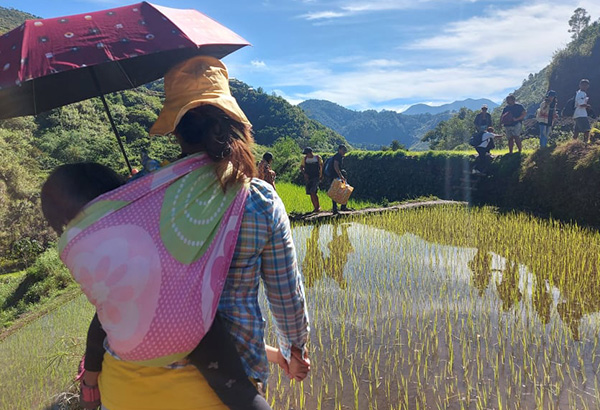
10. Time to rest

According to Apo Whang-Od's caretaker Estella Palangdao, the centenarian tattooist said the "three dots" stand for her full name "Maria Whang-Od Oggay," which is why the three dots have been dubbed her "signature."
But in a Facebook message to this author, Whang-Od's grandniece and protege Gracia "Grace" Palicas claimed that the "three dots" means "Gracia Palicas, Whang-Od and Elyang Wigan," Elyang being Whang-Od's second protege after Grace.
Grace recalled that Apo Whang-Od began teaching her in 2006. Elyang also became interested and sought to learn the craft. When tourists became so many for Whang-Od to handle, the three of them made a pact to make a sign, the three dots, that would represent the three of them, since Grace and Elyang were the first ones to help Whang-Od.
"We are here as a new generation and (as) grandnieces to continue our traditions," Grace said.
Like how superstars are treated by their managers, Estella and the villagers make sure that Whang-Od is not abused. To prevent her from being exploited by tourists, every tour batch is given a number and is asked to wait for their turn.
Whang-Od also has scheduled break times and cannot be disturbed, even by the most die-hard fans, when she is eating, sleeping or doing anything she wants or must do – most especially when it is her time to watch her ultimate crush Coco Martin in “Ang Probinsyano”!



















